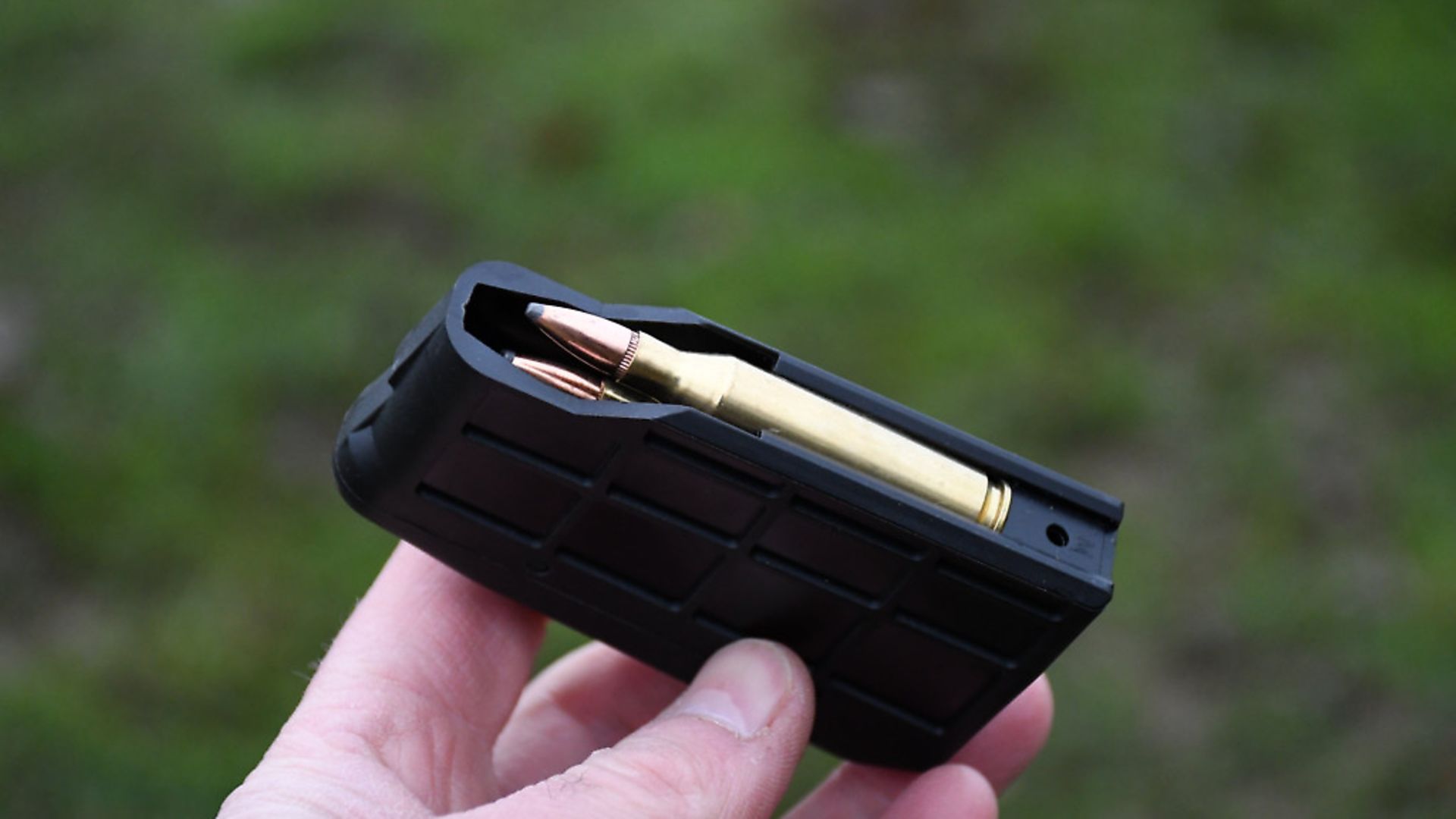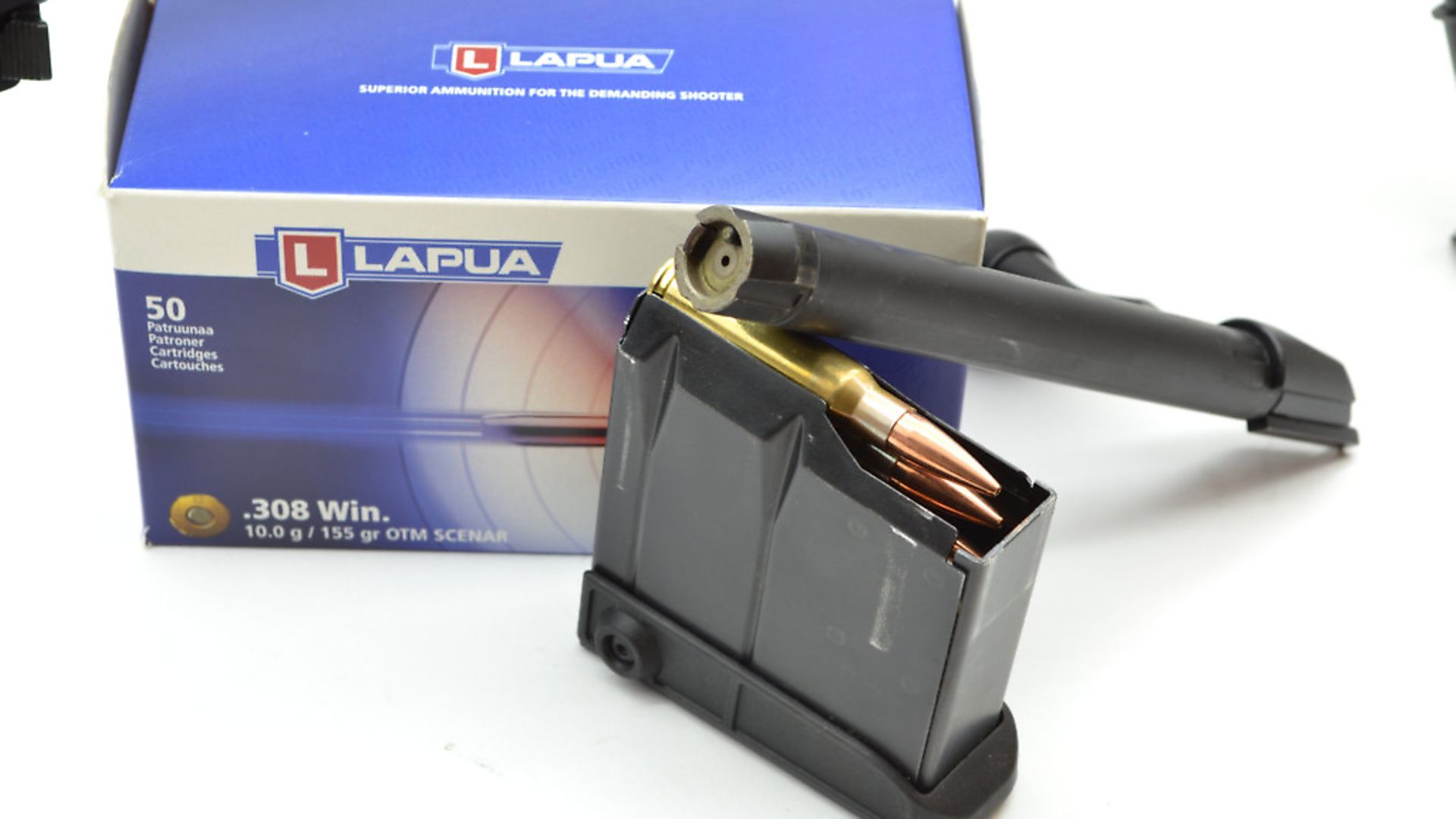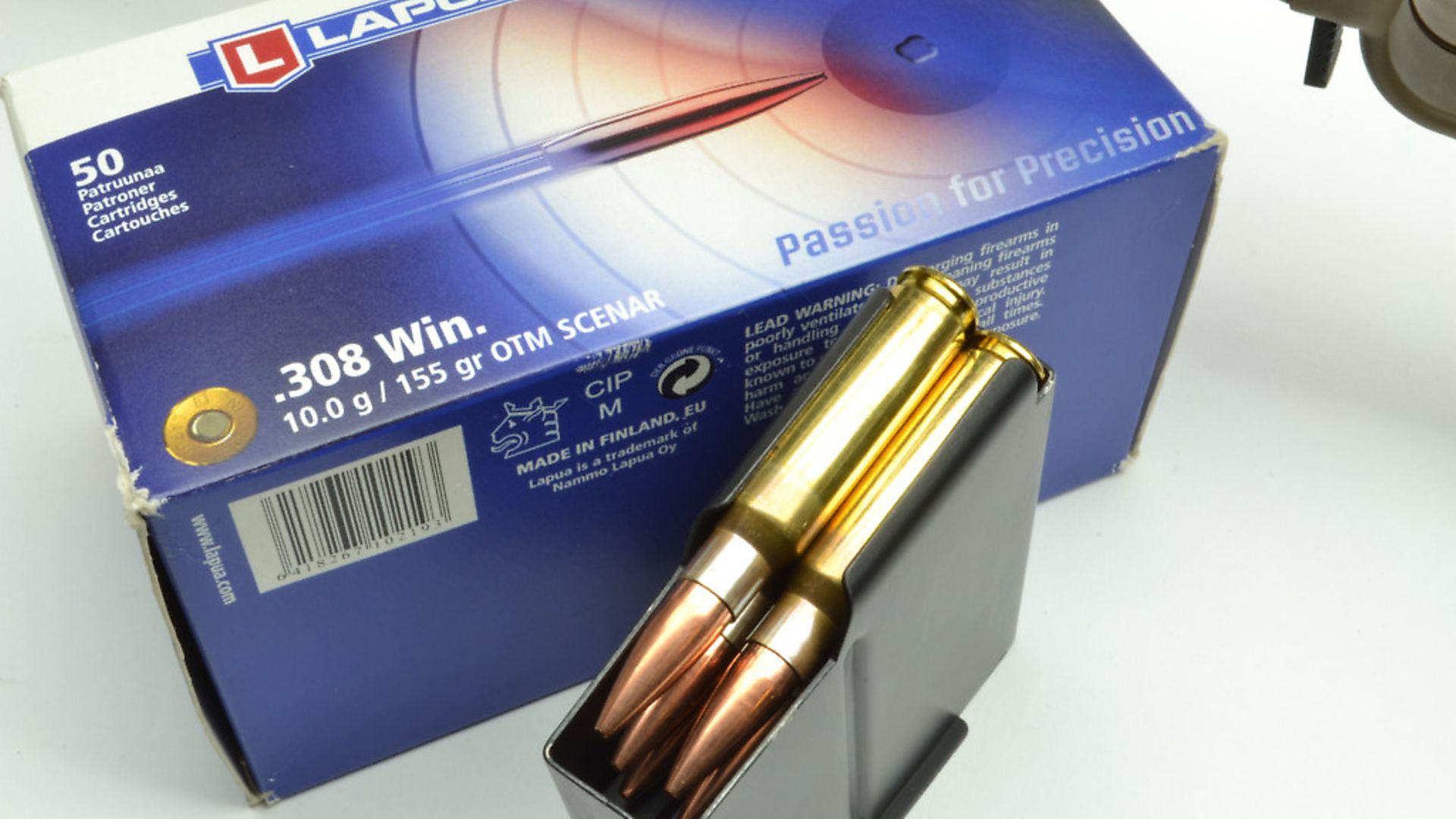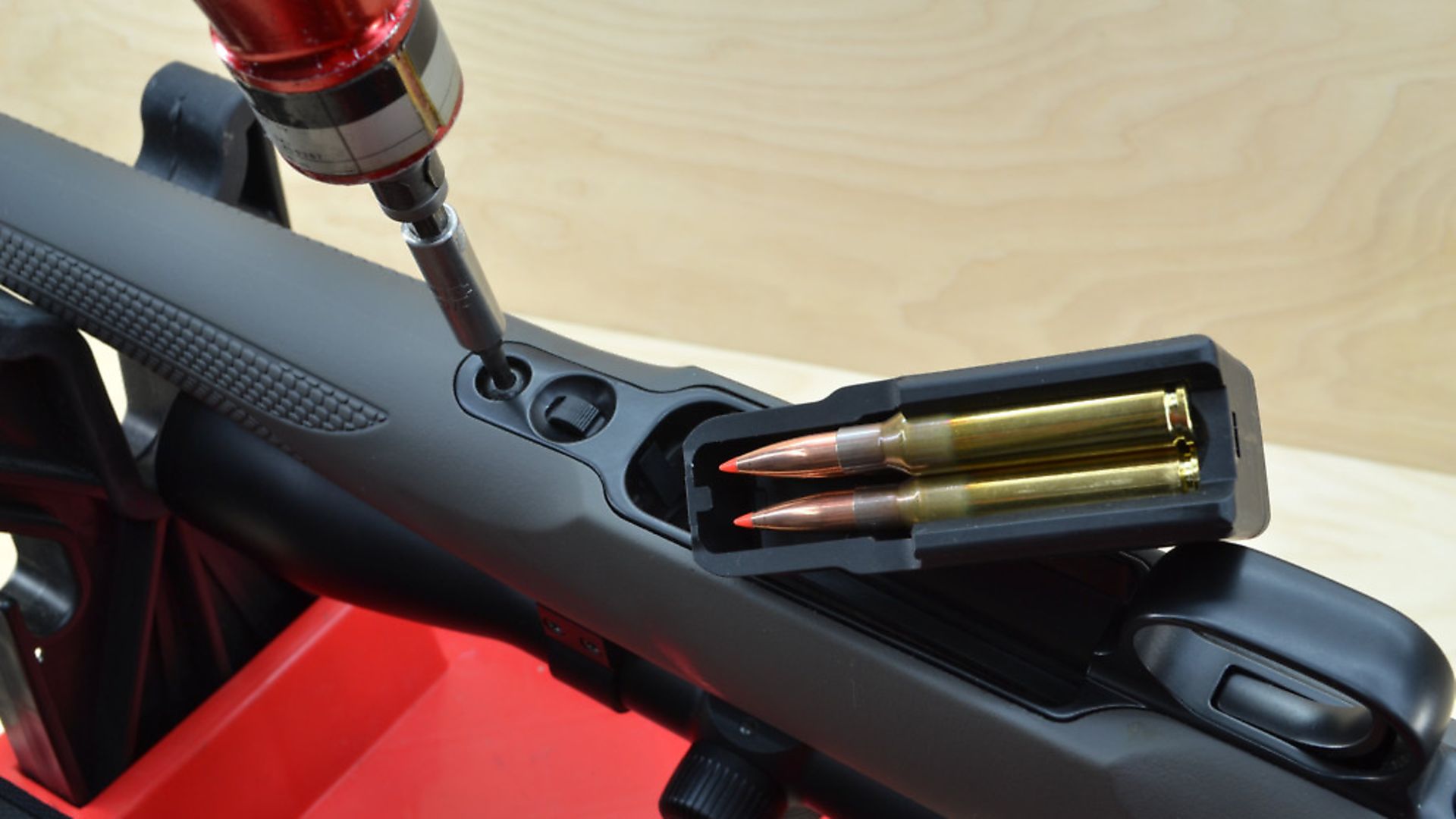What type of magazine will I find on sporting rifles?
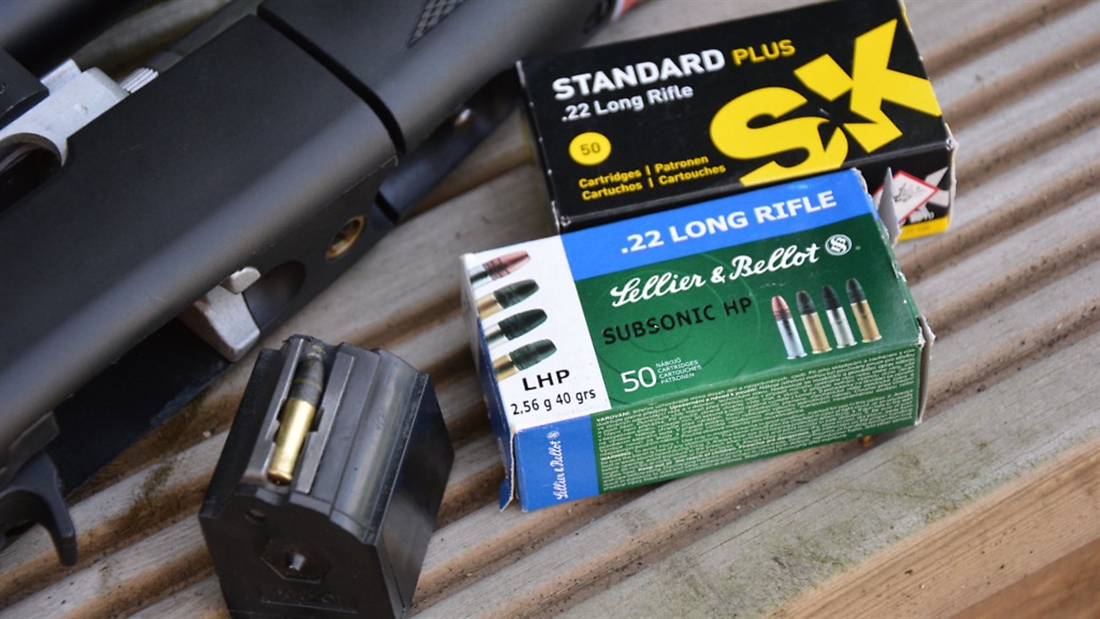
Chris Parkin busts some jargon by explaining in simple terms the three different types of rifle magazine design most commonly found on sporting rifles
I must admit, magazine design can be a big issue for me on a rifle, and until you have seen and used several, the jargon used can seem a little obscure – many are a bit vague and some used in the pages of Rifle Shooter are even of my own creation. Simply put, there are three types of detachable magazine on common sporting rifles, although within each ‘type’, there will be slight differences from rifle to rifle.
Type 1 – single-column magazine
The single-column magazine type is well-demonstrated by the Tikka T3 series of rifles whereby all the rounds in the mag sit directly on top of each other. When loaded, each must be pushed backward, along and underneath the feed lips of the mag with either the next round or your thumb used to ease pressure on the previously loaded rounds against the tension of the spring follower.
When loading, each round is driven forward by the bolt and pushed from the magazine, up the feed ramp and into the rifle’s chamber. This will only work with a push-feed, and not a controlled-feed bolt-face because each round has to go out of the mag forwards, the reverse of how it got in and can’t simply pop up out of the top.
A tweak on this theme, with a slight change to this process, is the Sako A7 system, which looks and works like the T3 but allows rounds to be pressed straight down into the magazine. This is because the feed lips will spring apart slightly and allow your thumb pressure to overcome the force needed to prize them apart. When chambered, it works the same as the T3 design, though each round pushes straight out front into the chamber. Blaser use a vaguely similar system on the R8.
A second tweak is a slight twist to this process whereby the magazine follower rotates against a spring, wrapping that single column into a circle before re-presenting single rounds in the same way to a single pair of feed lips in a push-feed action. This is commonly seen on Ruger 10/22 rimfires and some Steyr rifle designs. They are complex and tend to be more expensive to make and easier to jam, so aren’t as commonly seen.
Type 2 – the t1 magazine
The second design type is epitomised by the Tikka T3 CTR and Tac designs, whereby a slightly jumbled assortment of rounds stagger side by side into a wider, looser column, still singly loaded and fed from a central set of feed lips at the top of the magazine but somewhat shuffled towards that centreline by the angled walls of the magazine itself.
You see a similar process on the Tikka T1X rimfire. This tiny magazine holds 10 rounds, all staggered seemingly haphazardly left and right of centre as they are loaded in, yet squeezed centrally to the feed lips and presented to the bolt one by one as they arrive at the top. The T1 magazine, by the way, is a bit of a class leader and masterpiece of function in terms of reliability and storage capacity in a small space. Tikka invested heavily here, and it shows! The bulky .338 rounds of the five-shot Sako M10 magazine also work similarly in this system.
Perhaps the overall character trait of this type is that the bullets of each round are closer together, but the case head is allowed to flare outward – great for belted magnums.
Type 3 – twin column magazine
The third magazine family, perhaps the last jump of evolution, is the parallel twin-column design favoured in the Sako 85, Sauer 100-101 and Mauser M12-18 families. These hold the rounds in two neat parallel columns to the left and right of the magazine for compact packaging, broadly staggered to avoid them spilling out under spring tension. They are effectively pushed apart by their own columns’ pressure, and forced upward and out onto their own side of the feed lips.
This is a system also featured on the Accuracy International AX/AW/AT (10), AK47 and AR-15 derivatives because it allows rounds to be loaded more quickly and for the latter two, in higher volume and/or by machines. Each round is sequentially fed from either the left or right column by the push or controlled-feed bolt-face, generally onto its own left or right-side niche in the feed ramp and into the chamber.
In a hunting situation, single rounds can be added to the magazine with just light pressure on top of the already loaded magazine with no requirement to remove it from the rifle, it remains compact and pretty damn reliable.
The downside is it’s often associated with triple lug, rather than twin lug bolt actions. In general, a three-lug bolt has one lug riding vertically down to scoop the rounds from the magazine where a twin lug bolt has only its central shaft able to push rounds free – but that is a whole extra story and a far deeper insight into action design and the tolerances of getting a magazine to sit in the correct position.
Type three has a shaped follower to begin the sequence to which the rounds fit one after the other above them – type two can also have a slight shape to the follower in this respect.
And finally…
A good magazine design can make or break a rifle in my opinion. Some systems became universal bywords in the rifle world, such as the AICS system used by Accuracy International in their older chassis rifles. Many other makers (Magpul’s P-Mags, for example) now offer their own versions for Bergaras, Remingtons and Tikka custom rifles in the same style.
Of course, there will be designs that buck these trends. For example, Browning’s T-Bolt uses a fantastical double Helix system to feed single rounds to central-feed lips and I’m sure I have forgotten other unique designs, some current and others long faded into history.




